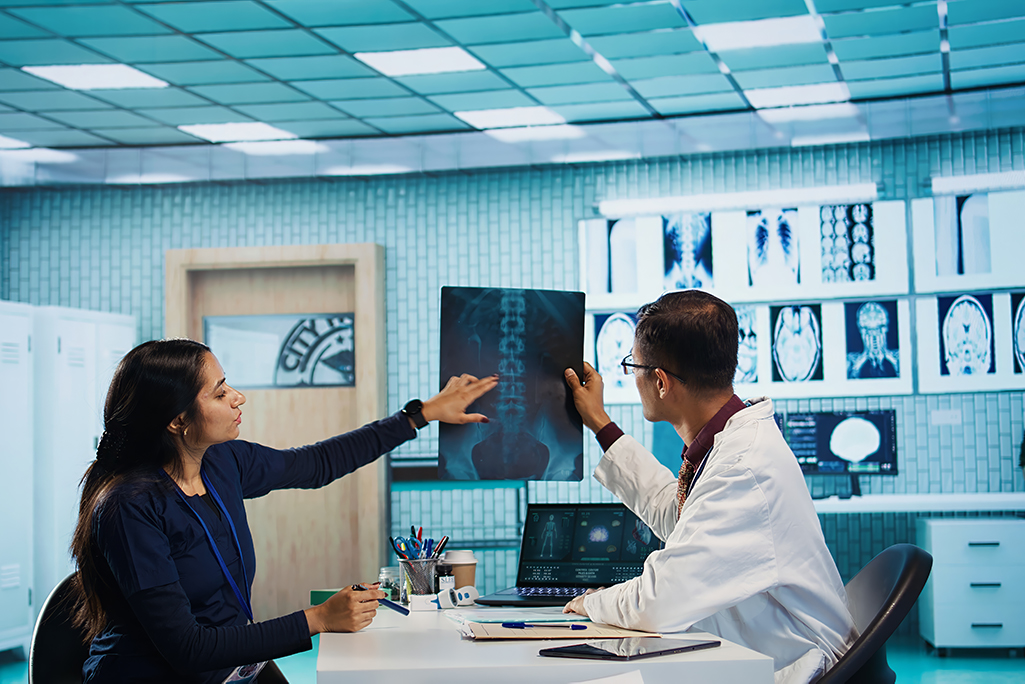Essential Skills Every Imaging Technologist Should Have
In today’s healthcare landscape, medical imaging plays a pivotal role in accurate diagnosis and timely treatment. Whether it’s an X-ray for a fractured bone, an MRI for brain abnormalities, or a CT scan for internal injuries, these procedures depend heavily on the expertise of imaging technologists. These professionals are the ones behind the scenes, operating the equipment, ensuring accurate image capture, and supporting radiologists in interpreting findings.

With medical imaging becoming more advanced and central to healthcare services, the demand for skilled imaging technologists is growing rapidly across India. As a result, several top medical colleges and universities have developed comprehensive BSc Medical Imaging Technology programs that offer a mix of theoretical foundations and hands-on clinical training. These programs are designed to produce well-rounded technologists capable of adapting to the ever-evolving landscape of diagnostic imaging.
Whether you are a current student, an aspiring professional, or someone curious about this field, it’s important to understand that success as a medical imaging technologist doesn’t rely solely on academic knowledge. It also requires a specific set of technical, interpersonal, and ethical skills that ensure both patient safety and diagnostic accuracy.
Technical Proficiency with Imaging Equipment
At the core of an imaging technologist’s responsibilities is the ability to operate and manage a wide range of diagnostic equipment. This includes X-ray machines, CT scanners, MRI systems, ultrasound devices, and more. Each modality has its own set of technical principles, image acquisition protocols, and safety considerations.
To excel, technologists must develop a deep understanding of imaging physics, machine calibration, image optimization, and radiation safety. More importantly, they must know when and how to adjust techniques based on a patient’s age, size, and clinical condition. This technical adaptability is essential in producing high-quality images that are accurate, clear, and diagnostically useful.
Attention to Detail
Imaging isn’t just about capturing a picture—it’s about capturing the right image, from the right angle, with the right settings. A small error in positioning or exposure can obscure critical information, potentially leading to an incorrect diagnosis.
Imaging technologists must develop an eagle-eye for detail. This includes verifying patient identification, checking imaging orders, reviewing patient history, and following proper protocols. They must also carefully monitor each scan to ensure clarity and completeness
before moving on to the next case. Even subtle signs—like a shadow on an X-ray or a misalignment in an MRI slice—can be diagnostically significant.
Patient Care and Communication
Medical imaging procedures can often be intimidating for patients, especially when it involves loud machines, enclosed spaces, or long scan times. Some patients may be in pain, while others may be anxious or uncooperative due to age or cognitive conditions.
Imaging technologists must develop strong communication skills to explain procedures clearly, offer reassurance, and maintain professionalism throughout the process. Simple actions like providing earplugs during an MRI or guiding a patient through breathing instructions can make a significant difference in both patient experience and scan quality.
Empathy, patience, and interpersonal sensitivity are vital—particularly when working with children, elderly patients, or those with disabilities.
Commitment to Continuous Learning
The field of diagnostic imaging is constantly evolving. With the introduction of digital radiography, AI-assisted analysis, 3D imaging, and cloud-based PACS systems, professionals must stay current with the latest advancements.
Many students pursuing their BSc Medical Imaging Technology recognize this early in their academic journey. As a result, they seek out certification courses, online workshops, and clinical seminars, often enrolling in these alongside their regular studies to gain an edge. Staying up-to-date with technology not only improves their skill set but also makes them more employable in both public and private healthcare settings.
Additionally, imaging technologists are expected to understand basic IT systems, data storage protocols, and software interfaces used in hospitals and diagnostics labs today. The ability to adapt to new tools and software is now an essential part of the job.

Teamwork and Collaboration
Imaging technologists are part of a much larger healthcare system. They work closely with radiologists, physicians, nurses, and sometimes even surgeons. Their ability to communicate effectively and collaborate with these professionals is key to ensuring timely and accurate diagnoses.
For example, during emergency trauma scans or contrast studies, technologists must be able to follow instructions swiftly, coordinate with staff, and adjust protocols on the fly. Being a team player is not only important for efficiency but also contributes to better patient outcomes.
Good interpersonal skills also help in maintaining a healthy work environment, managing patient flow, and reducing stress in high-pressure situations.
Ethical Responsibility and Patient Confidentiality
Medical imaging technologists are entrusted with sensitive patient data—from clinical reports to high-resolution internal images. It is critical that they uphold ethical standards and confidentiality protocols at all times.
This includes securing patient records, ensuring proper data transfer, and not discussing medical findings unless authorized. Additionally, technologists must obtain proper consent, explain procedures truthfully, and respect patient autonomy, particularly in invasive imaging techniques or those requiring contrast media.
An ethical approach not only builds patient trust but also aligns with the legal and professional codes set by health authorities.
Problem-Solving and Critical Thinking
Every patient is different, and not every scan goes as planned. From equipment malfunctions to unexpected patient reactions, imaging technologists must think critically to troubleshoot problems and adapt procedures in real-time.
For example, if a patient is claustrophobic during an MRI, the technologist might suggest a wide-bore scanner or a sedation protocol. If a CT machine gives a warning signal, the technologist needs to interpret it correctly and take appropriate action without delay.
This ability to make quick, well-informed decisions is crucial in maintaining workflow and ensuring patient safety.
Medical imaging is one of the most exciting and impactful branches of healthcare. It blends technology, patient care, and diagnostic precision in a way few other fields do. But the road to becoming a successful imaging technologist involves more than just academic excellence—it requires the development of practical, ethical, and interpersonal skills that evolve with time and experience.
From mastering complex imaging machines to comforting a nervous patient, the role demands a unique mix of expertise and empathy. These skills begin to take shape during formal education and training, especially in well-structured academic environments that offer clinical exposure, lab sessions, and access to the latest imaging tools.
If you’re considering this career path, focus not just on scoring marks but also on developing these essential qualities that truly define a competent imaging professional. And remember—your learning doesn’t stop after graduation. Stay curious, stay updated, and stay committed to excellence.
